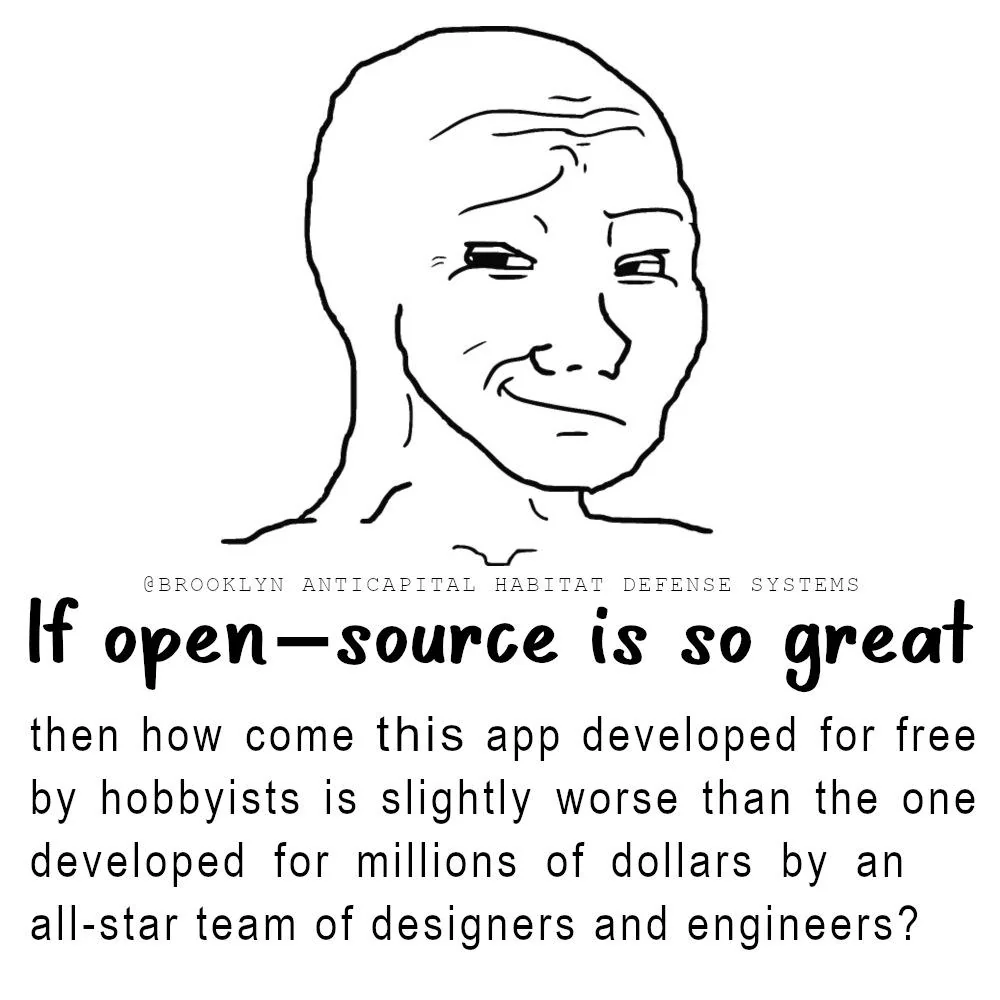The cost of Open Source
17 September 2024

What are you ready to pay with?
Open Source solutions do not come for free. The support is not included in the price, there is a learning curve, and the software might not be as feature-complete as a commercial solution.
So, what makes open source worth it?
It mitigates many of the biggest risks associated with prioprietary companies that could threaten your business.
Proprietary software: Digital sharecropping
As the manifest of free (libre) software implies, proprietary software limits the user freedoms.
Price hikes
In 2023, Unity decided to increase the price of their software drastically. Most notably, it created situations where the software would actually be unreasonably expensive for small developers. After a whole year of outcry and increased success of their open-source competitor, Godot, they finally decided to revert it.
Photoshop has been known to increase its price regularly. For this price, you do not get the ability to opt out of their data collection practices.
Privacy and security risks
The operating system Windows has been introducing more and more features that present serious privacy risks. Such features have been introduced to their Office suite as well.
In 2021, Atlassian announced the discontinuation of its self-hosted server products, forcing users to migrate to cloud or data center versions. This is not a move that is reasonable for companies with strict security requirements, and users have to pay for it.
Feature removal
Sometimes, the software editor decides to remove a feature that was previously available, or even kill the whole product. Google, a not so small company, is known to be merciless in this regard. Here is a graveyard of all their previous offerings: Killed by Google In the case of professional software, there can be a big learning curve to switch.
Unfixable bugs
Microsoft Authenticator, a program to improve security, has a bug that wipes out existing accounts, locking users out of their other users account. Reporting suggests that, despite having been reported for years, and being a miserable experience for the users, the bug has not been fixed. Commenters suggest it is not a priority as the product does not generate revenue. Whatever the reason, it is beyond kafkaesque to be a paying customer of theirs and be treated in such a way.
Locked features and paid integrations
The software editor might decide to lock features behind a paywall, or to make them available only through a paid integration. This common practice makes you a hostage to the data held by the company you are paying.
Clopen source: muddying the waters
Because of the success of Open Source, many companies have adopted a “Clopen[^topo] Source” strategy. The most common example is the “Community Edition” of a software, which is Open Source, and the “Enterprise Edition”, which is not. There are many variants of the pattern, which makes it more and more complicated to determine what is “true” Open Source and what is not. Most notably, open-source is not a business model.
Typically, a “clopen source” software is still preferable to a fully closed one. If the use-case is not supported by the software editor, you still have the possibility to change it for yourself, depending on a cost analysis.
The cost of Open Source

While free, open-source software comes with hidden costs, often involving more work.
But think of it this way: eating healthy may come with an upfront cost, but what’s the long-term price of not eating healthy?
So, in the end, what currency would you prefer to spend: your time now, or dealing with long-term consequences later?

-- len